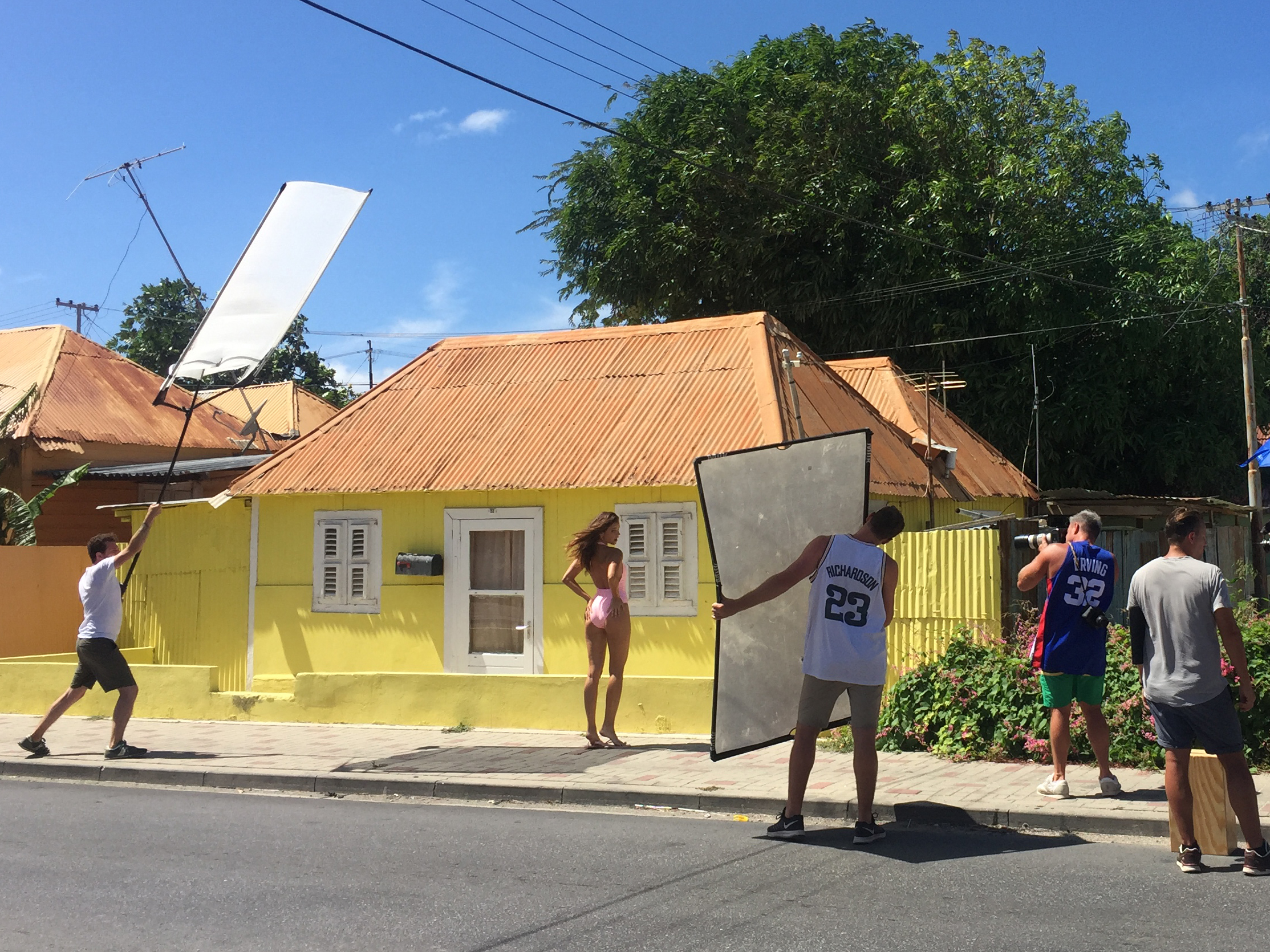
High-profile shoots rely on complex lighting setups, which in turn rely on a large team of assistants. For the Sports Illustrated Swimsuit Issue, photographers tend not to use any lights at all. Instead they work with available light modifying it with strategically placed light modifiers such as a scrim and a bounce.
A scrim is a large silk screen that resembles a giant fly swatter. It is placed between the sun and the model to soften sunlight. This reduces the sun a quarter-of-a-stop of light or a half-of-a-stop depending on the thickness of the material. SI photographer James Macari uses a scrim “if [the model] has recessed eyes and the sun is coming up to minimize the harshness of the light.” At times scrims are essential to reducing shadows, but are also used for stylistic reasons. “I like definition in the face,” says Macari. “But obviously flat light prints better. It’s what sells in the commercial world. But with what we’re selling they have to be fresh looking.”

Scrims are quite large, generally 6×4.5 or 8×10 feet. They can be quite cumbersome to use and can turn into sails if turned in the wrong direction on a windy day, causing them to snap.
Assistants and photographers should also be aware of the shadow scrim’s can create. “You’ve got to be careful with the shadow,” says SI photographer Ben Watts. “It creates a square shadow which you want to camouflage in with other shadows like palm leaves or retouch out.”
But scrims are often only half of the battle. While scrims reduce the intensity of the light, reflectors can help add light and contrast into the shadows areas like the face and the eyes. There are a variety of bounce materials, each with different shine qualities. The most common are white, silver, and gold. Each photographer has their own preferences. For James Macari it’s old silver reflectors. “I don’t use any gold. I prefer to use a silver bounce. I also use old bounces because they’re weaker.”


It is worth noting that beach shoots also provide quite a few natural reflectors. Sand and water can bounce a significant amount of light into the subjects. Macari prefers to shoot without any light modifiers at all when the light is perfect. That approach worked so well for his shoot with Ashley Graham it ended up on the cover of last year’s issue.
Using scrims and reflectors might be essential but the true trick is in the timing. On a typical SI shoot, James Macari wakes up at 3 AM, starts shooting around 6 AM until 10 AM. He then edits and quickly naps before shooting again at 7 PM to around 10 PM. The photographers and tireless photo staff lead by MJ Day maintain that breakneck schedule for ten to 18 days a few times a year. “It is a dream job sure, but it sure can run you down,” says Macari.
More Must-Reads from TIME
- Cybersecurity Experts Are Sounding the Alarm on DOGE
- Meet the 2025 Women of the Year
- The Harsh Truth About Disability Inclusion
- Why Do More Young Adults Have Cancer?
- Colman Domingo Leads With Radical Love
- How to Get Better at Doing Things Alone
- Michelle Zauner Stares Down the Darkness
Contact us at letters@time.com